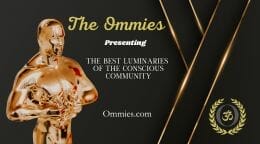What Our Emotions Really Tell Us

What are your emotions REALLY telling you?
by Sandra Rea
We all experience a range of emotions on a daily basis. Increasingly, however, spiritually minded people tend to shun painful ones, believing that they should be beyond such feelings and living in a state of bliss! Of course, it is possible to live in greater states of peace and harmony. However, resisting painful emotions as they arise is not the way to achieve peace. As we know, whatever we resist persists.
The pain we experience is simply an indicator of disharmony and pleasurable emotions are an indicator of harmony. Emotions are our internal guidance system. If we veer off course, our emotions act like a warning system and are there to guide us back onto the path of love, peace, and joy.
We have learned, however, not to use our emotional self as a guidance system but to identify with emotions as they arise. We have become our emotions!
How to Shift Our Emotional Mindset
If we shift our mindset to view them as a barometer, rather than something to be avoided or resisted, we not only become a lot happier, but we can begin to use our emotions for our benefit. From this perspective, we can begin to observe emotions as they arise and ask ourselves a few questions. Firstly, how does this emotion feel? Does it feel good or bad?
If it feels good, we can continue to choose these thoughts and emotions. If it feels anything less than good, we can ask ourselves – what is this indicating? Usually, a painful emotion is indicating that we have chosen thoughts that are not in alignment with our true state of being and this feels uncomfortable. The level of discomfort is relative to the degree to which we have become misaligned.
Adding Layers to Our Emotional Being
At our purest state, we are love. Love is the ultimate state of being. It is said that love isn’t an emotional state, love simply is. Emotions are lower forms of love. Joy is inferior to love, happiness is inferior to joy, and contentment is inferior to happiness and so forth, all the way down to painful emotions such as discontentment, frustration, and anger amongst others.
In this way, we can view emotions in layers so to speak, love being at the top and fear and the bottom. Fear then becomes the sponsor of all emotions that are anything other than pure love. When we choose to align with fear rather than love, we have chosen something that is other than what we are.
So rather than resisting or fighting our emotions, we can celebrate and thank the emotion for reminding us that we have chosen a thought which is not in alignment with who we are. We can honor the emotion for doing its job, and forgive ourselves for choosing a thought that is in conflict with our nature. We may then choose something that is in alignment with our source of being – love.
Five Steps to Remember about Emotions:
1. Becoming aware of our emotions
2. Recognizing their purpose
3. Honoring and respecting emotions by allowing them to be felt
4. Releasing emotions
5. Choosing other emotions such as gratitude or love instead
By allowing ourselves to feel the emotion of anger for example as it arises, we are not pushing it away or letting it control us by reacting to it, we simply recognize and honor the emotion. When anger is experienced in the body without the need to externalize it, it’s like a flame that has no air and gradually dies.
When externalized, however, it’s like feeding oxygen to the flame and fueling the fire. Usually, when the anger is felt within, we realize that we are the source of the anger and not anything or anyone around us. When we externalize anger, we cannot see clearly as we are focused on a false reality of blame and projecting onto others, so we become blinded to the truth.
Feeling and Responding to Emotions
Feeling the emotion inside is not to say we force the emotion down. This is something completely different and leads to all sorts of problems. Anger for example when repressed usually fights back with greater force, leading to a fiery outburst at some later stage.
The process of feeling the emotion within the body without reacting to it takes great awareness and lots of practice. In the beginning, we will notice we have had an angry outburst after the event, but there will be awareness of this which is a starting point. With practice, we will catch ourselves during the outburst or just before it is about to happen. Finally, we will find that situations that once gave rise to anger no longer trigger us. But it doesn’t end there; it is a continual practice of awareness, discipline and more awareness and discipline.
You will also enjoy How to Make Friends with Your (Inner) Enemy
About the Author
Sandra Rea is a spiritual teacher, author, and energy healer. She helps people to release limiting beliefs that are holding them back and reconnect with the highest divine expression of themselves. Through her courses and lectures, she shares her wisdom and knowledge. This encourages people to start living a life of freedom and possibility. Visit her website, www.angelicbodies.ie, to find out more.
OMTimes Magazine is one of the leading on-line content providers of positivity, wellness and personal empowerment. OMTimes Magazine - Co-Creating a More Conscious Reality








